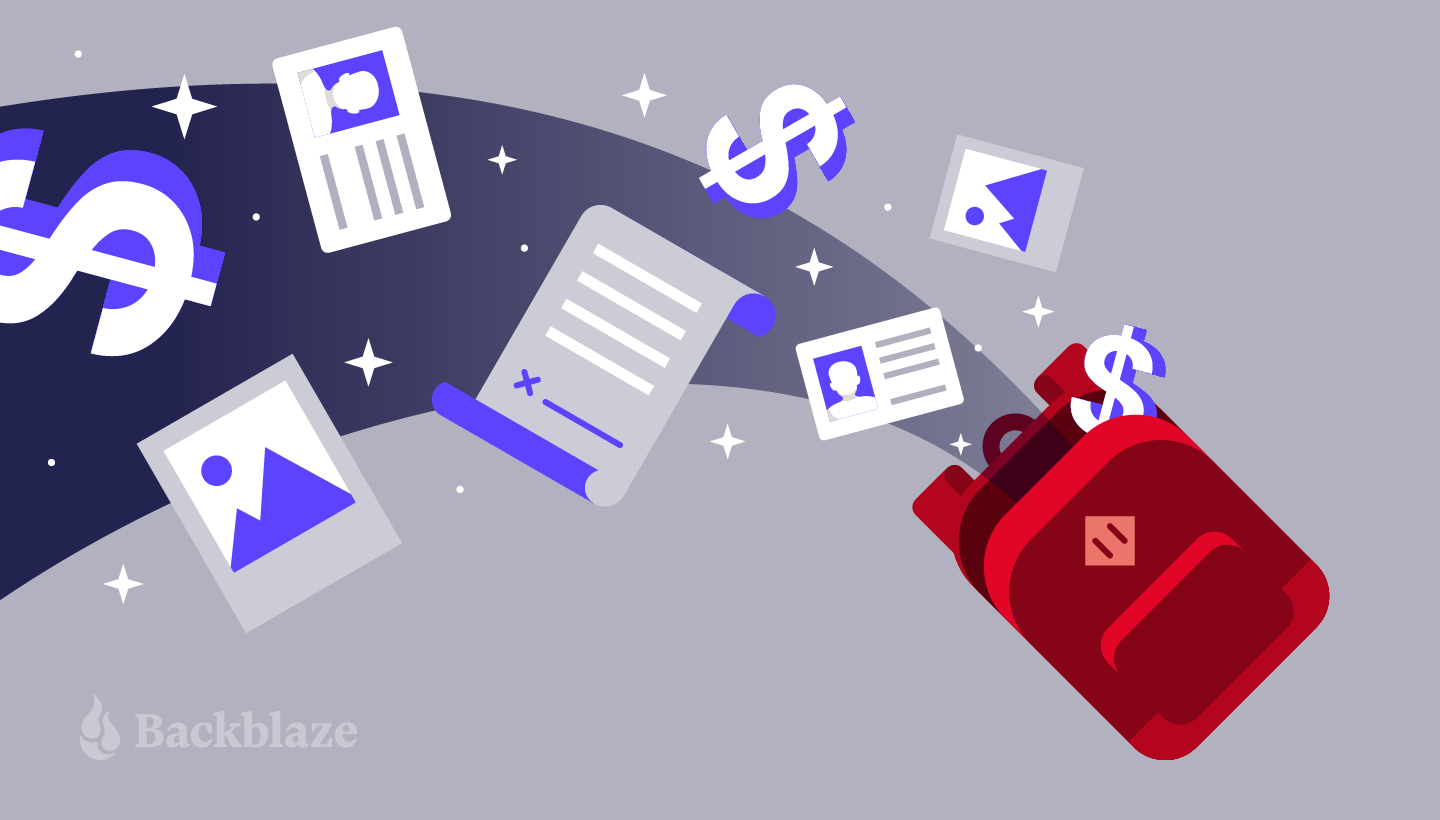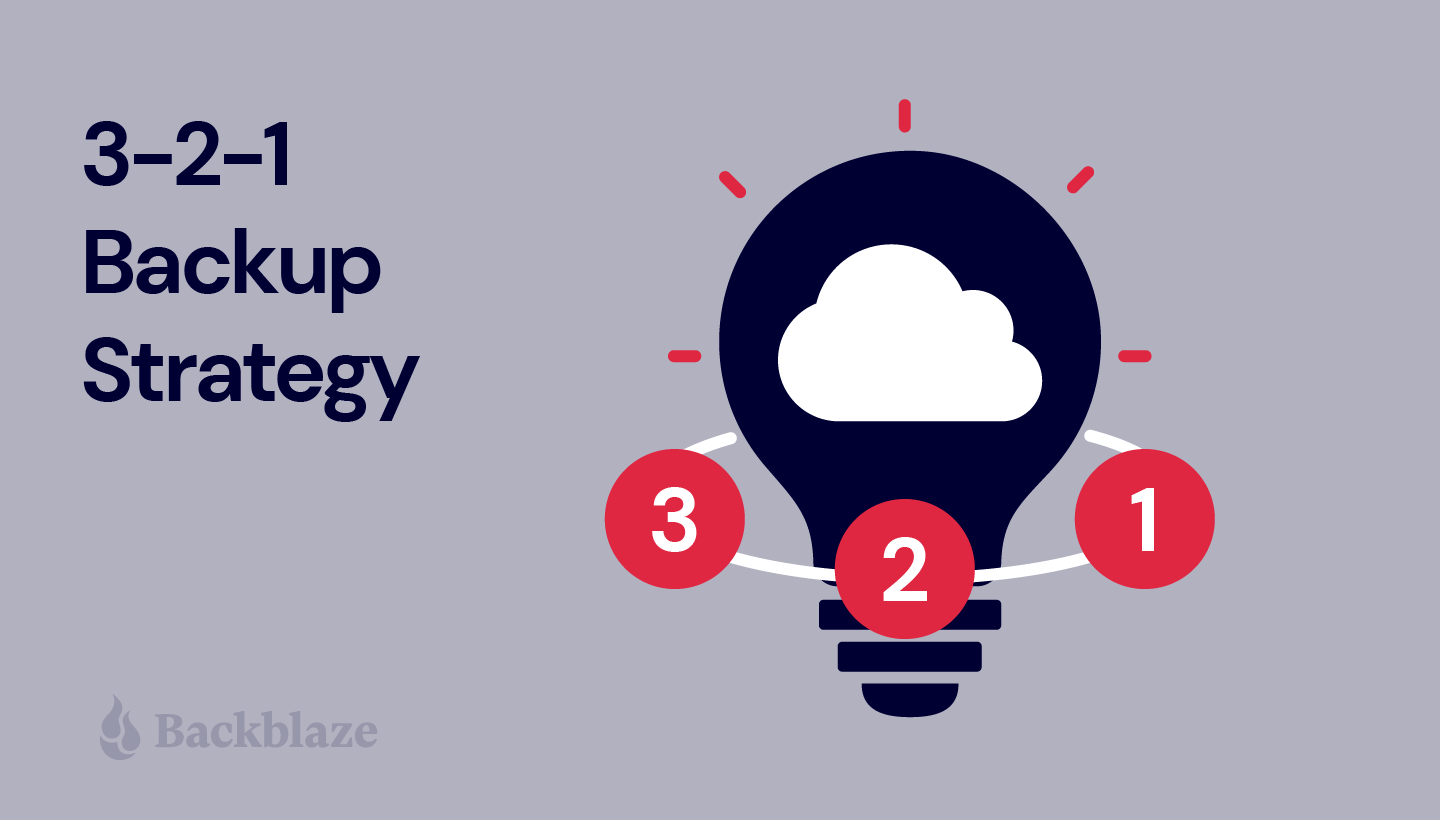
Quick! You have 10 minutes to get your most important documents out of your house. What do you need?
Here’s another scenario: you’re away from home and you find out there was a fire. Are you confident that you have all your important information somewhere you can access?
It’s never fun to imagine disaster scenarios, but that doesn’t mean you should avoid the necessary preparation. Building a good emergency kit checklist—and digitizing the things you can—is one of the easiest things you can do to give yourself peace of mind. Today, I’m covering all the things that can and should go into your digital go bag.
Editor’s Note
We’ve had this article on our calendar for a while now, and it’s part of our campaign to celebrate World Backup Day. But, we never want to be the ones shifting the focus from the victims of natural disasters. With the devastating storms that rolled through the U.S. South and beyond this weekend, we wanted to take a moment to say that our thoughts are with everyone affected, and if you have the ability to donate, this is a great boots-on-the-ground charity helping folks out right now.
Disaster Prep: Better Known as Recovery Planning
It may seem far-fetched that you’ll be in the position to get the essentials in only 10 minutes, but speaking from personal experience, that’s exactly what happened to me when the 2003 Cedar Fire struck in San Diego—there’s nothing like seeing your friends’ homes on the national news, let me tell you. And, having spent much of my adult life in hurricane-prone New Orleans, disaster readiness is just a way of life. It’s common to discuss the incoming storms with the old-timers in your neighborhood bar over a $2 afternoon High Life, and they are almost always right in predicting if a hurricane is going to turn and hit Florida.

One of the things these experiences have taught me is that disasters and recovery happen in stages. There’s the inciting event—a house fire, a hurricane, etc.—and then there’s the displacement and recovery. You’re trying to call an insurance company when the lines are all tied up, and when you finally get through, you need to give them information that they need when you’re far from home and in crisis. You may have renter’s insurance, but when you’re trying to re-buy your book collection, really, which ones did you have? And, there are some things that can’t be replaced—photos are a great example. Finding a way to organize and digitize these things means that you don’t have to worry about stuff when you should be worrying about people.
All that to say, the more you can do to be prepared ahead of time, the better. That means not only having your documents in a place you can access, but also knowing what documents you need in the first place. While this type of file organization started out in response to natural disasters, it’s actually helped in many other ways—I always know where my files are to give to my tax guy, and I’ve implemented a good 3-2-1 backup strategy, which means I’m confident my data is protected and accessible.
As it happens, there’s a name for this type of intentional preparation when you’re building an emergency kit: folks call those kits go bags. It makes sense right? You have a bag that holds the things you need to go. These days, though, many of the things that you’d traditionally include in that physical bag can also be digitized. So, with all that in mind, let’s talk about how to build your (digital) go bag.
What Documents Do I Need in My Emergency Kit?
A little caveat here: just because you can digitize something, doesn’t mean that should be your only copy. There are some things that you just flat-out need to have in person, like your driver’s license, though some states have experimented with digital wallets that contain official, legal copies of those things. Nevertheless, having a digital backup of your important physical documents means that you’ll have the information to replace them should you need to.
After that, you can break your go bag checklist into a few different categories.
- Household Identification
- Financial and Legal Information
- Medical Information
- Emergency Contact Information
- Valuables and Priceless Personal Items
We’ve shamelessly borrowed this information from a Federal Emergency Management Agency (FEMA) list of essentials, and we’ve added a few notes as well. Let’s break down each category.
Household Identification
These are all the things you need to prove you are who you say you are, and to prove that your kids, pets, and spouse are, in fact, your kids, pets, and spouse. It may seem like this isn’t important, but there were whole organizations dedicated to reuniting pets with their rightful owners after Hurricane Katrina—and it wasn’t easy. And, imagine if you’ve divorced and don’t have custody papers in an emergency. Sure, courts have records of those agreements, but sometimes those papers take weeks or months to get copies of.
The List
- Vital Records: Birth certificates, marriage agreements, divorce decrees, adoption or custody papers.
- Identity Records: Passports, driver’s license, i.d. card, Social Security card, green card, visa, military service i.d.
- Pet Records: Pet ownership papers, identification tags, microchip information.

Financial and Legal Information
If your home or income is affected during a disaster, you’ll need documentation to request assistance from your insurance company or government disaster assistance programs. Remember that even after you get assistance, all that comes with tax implications down the road (for better or worse). Both of those processes take time, so in addition to having your information organized and ready to go, try to keep some emergency cash on hand during high-risk time periods.
The List
- Housing Documents: Lease or rental agreements, mortgage agreement, home equity line of credit, house or property deed, lists of/receipts for repairs.
- Bills: Utility bills, student loans, alimony, child support, elder care, gym memberships, streaming services.
- Vehicle Documents: Loan documents, VIN number, registration, title.
- Financial Accounts: Checking, savings, debit cards, credit cards, retirement accounts, investment accounts.
- Insurance Policies: Homeowners, renters, auto, life, flood, fire.
- Note: Don’t forget to document your property! Make a list of items covered by insurance with their estimated values, and take pictures of all that stuff.
- Sources of Income: Pay stubs, government benefits, alimony, child support, rent payments, 1099 income.
- Tax Statements: Federal/state income tax returns, property tax, vehicle tax.
- Estates Planning: Wills, trusts, powers of attorney.
Medical Information
Even more so than the other sections on this list, it’s important to make sure you have thorough documentation for each member of your household. Remember that there are some items on this list that you’ll need sooner rather than later—think prescription refills. And, make sure that allergy information is front and center, especially life-threatening allergies (like to seafood or nuts).
The List
- Insurance Information: Health and dental insurance, Medicare, Medicaid, Veterans Administration (VA) health benefits.
- Medical Records: List of medications, illnesses/disabilities, immunizations, allergies, prescriptions, medical equipment and devices, pharmacy information.
- Legal Documents: Living will, medical powers of attorney, Do Not Resuscitate (DNR) documents, caregiver agency contracts, disabilities documentations, Social Security (SSI) benefits information.
- Contact Information: A list of doctors, specialists, dentists, pediatricians.
(Emergency) Contact Info
Finally, you’ll want all of the contact information you may need in one place—it’ll save you time and headaches when you’re trying to make calls, plus you may be able to delegate some phone calls to others. The exercise itself is useful to help you remember any miscellaneous items you may have forgotten in your other documents. Bonus: you can keep a list of extensions or direct phone lines and skip the automated phone tree.

The List
- Employers
- Schools
- Houses of worship
- Homeowners’ associations
- Home repair services
- Relatives/emergency contacts
- Utility companies
- Insurance companies
- Lawyers
- Local non-emergency services
- Government agencies
Valuables and Priceless Personal Items
Most of the things that fit in this section aren’t able to be digitized—your wedding dress, heirlooms, jewelry, and the like. Still, don’t forget that those things may have a paper trail you want to keep in your records, especially if you have additional insurance on things like the jewelry.
And, you can never forget to mention photos in this section. While most of us are now in the habit of using our smartphones as cameras, so most of our new photos are already stored in the cloud, don’t forget to digitize all of your photos, including the ones passed down by relatives, taken by professionals, and so on. And, even though it seems like our phones are safer than other formats, you’ll want to back up your mobile devices as well.
Go Bag: Go for Backups
Here’s the short answer to the question of what to digitize: anything you can. Even if the digital copies aren’t legally acceptable, like in our i.d. example above, you’ll at least have the information to fill out online forms or re-order the documents as necessary.
Once you have digital copies of all of these documents, it’s also easy to backup your information. We recommend that you follow a 3-2-1 backup strategy: having three copies of your files in two separate locations with one of those locations off-site. That way, you can grab your documents and go if you’re at home, or if the worst happens and you can’t access that on-site information, you can access all that information in the cloud.

Is My Go Bag Safe Online?
Good question. This is the most important information in your life, and we’re asking you to store it all online, the playground of cybercriminals. There’s a lot you can do to protect yourself, though. You’ve already achieved one of those things: setting up a backup strategy. You should also store your data in a secure location. Watch out for clever phishing attempts. And, make sure you follow password best practices, including setting up multi-factor authentication (MFA).
Make It a Holiday to Update Your Information Regularly
Remember that a lot of the information on this list will change over time. Maybe you’re the type of person who remembers to update their files continuously or when something big changes, but it’s a good idea to set one day per year (Around tax day? Maybe going into hurricane season? Groundhog’s Day?) that you intentionally set as Update Important Information Day. (We’re big fans of holidays that combine the whimsical and the practical here at Backblaze.) Feel free to workshop the holiday title and celebrate judiciously. Then, use a backup service like Backblaze Personal Backup that continuously and automatically backs up your data, and you’ll be pretty well prepared for whatever life throws at you.




